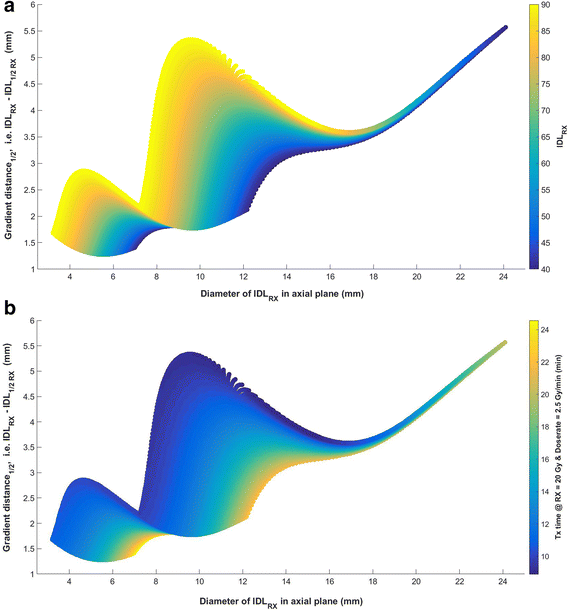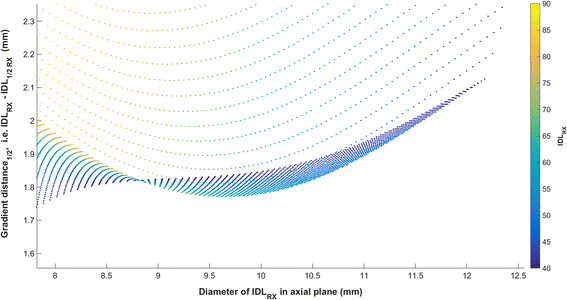Optimization of the prescription isodose line for Gamma Knife radiosurgery using the shot within shot technique
- PMID: 29178912
- PMCID: PMC5702131
- DOI: 10.1186/s13014-017-0919-4
Optimization of the prescription isodose line for Gamma Knife radiosurgery using the shot within shot technique
Abstract
Background: This work explores how the choice of prescription isodose line (IDL) affects the dose gradient, target coverage, and treatment time for Gamma Knife radiosurgery when a smaller shot is encompassed within a larger shot at the same stereotactic coordinates (shot within shot technique).
Methods: Beam profiles for the 4, 8, and 16 mm collimator settings were extracted from the treatment planning system and characterized using Gaussian fits. The characterized data were used to create over 10,000 shot within shot configurations by systematically changing collimator weighting and choice of prescription IDL. Each configuration was quantified in terms of the dose gradient, target coverage, and beam-on time. By analyzing these configurations, it was found that there are regions of overlap in target size where a higher prescription IDL provides equivalent dose fall-off to a plan prescribed at the 50% IDL. Furthermore, the data indicate that treatment times within these regions can be reduced by up to 40%. An optimization strategy was devised to realize these gains. The strategy was tested for seven patients treated for 1-4 brain metastases (20 lesions total).
Results: For a single collimator setting, the gradient in the axial plane was steepest when prescribed to the 56-63% (4 mm), 62-70% (8 mm), and 77-84% (16 mm) IDL, respectively. Through utilization of the optimization technique, beam-on time was reduced by more than 15% in 16/20 lesions. The volume of normal brain receiving 12 Gy or above also decreased in many cases, and in only one instance increased by more than 0.5 cm3.
Conclusions: This work demonstrates that IDL optimization using the shot within shot technique can reduce treatment times without degrading treatment plan quality.
Keywords: Gamma Knife; Gradient index; Metastases; Optimization; Radiosurgery.
Conflict of interest statement
Ethics approval and consent to participate
This work was performed with approval from the University of Miami – IRB B, exempt review.
Consent for publication
Not applicable.
Competing interests
The authors declare that they have no competing interests.
Publisher’s Note
Springer Nature remains neutral with regard to jurisdictional claims in published maps and institutional affiliations.
Figures




References
-
- Paddick I, Lippitz B. A simple dose gradient measurement tool to complement the conformity index. J Neurosurg. 2006;105(Suppl 1):194–201. - PubMed
-
- Novotny J, Bhatnagar J, Niranjan A, et al. Dosimetric comparison of the Leksell gamma knife Perfexion and 4C. J Neurosurg. 2008;109:8–14. - PubMed
-
- Petti P, Larson D, Kunwar S. Use of hybrid shots in planning Perfexion gamma knife treatments for lesions close to critical structures. J Neurosurg. 2008;109:34–40. - PubMed
MeSH terms
LinkOut - more resources
Full Text Sources
Other Literature Sources
Medical

